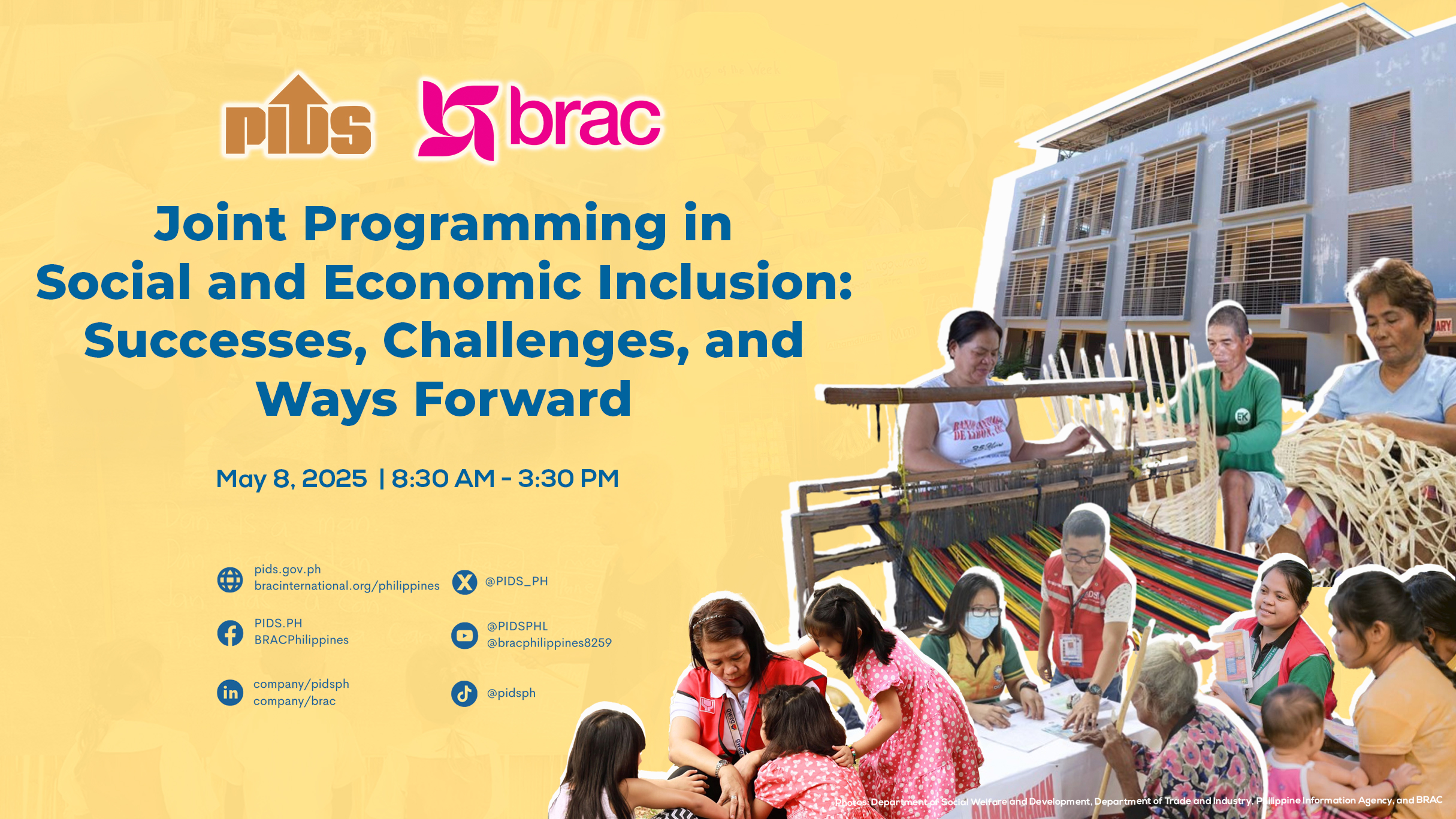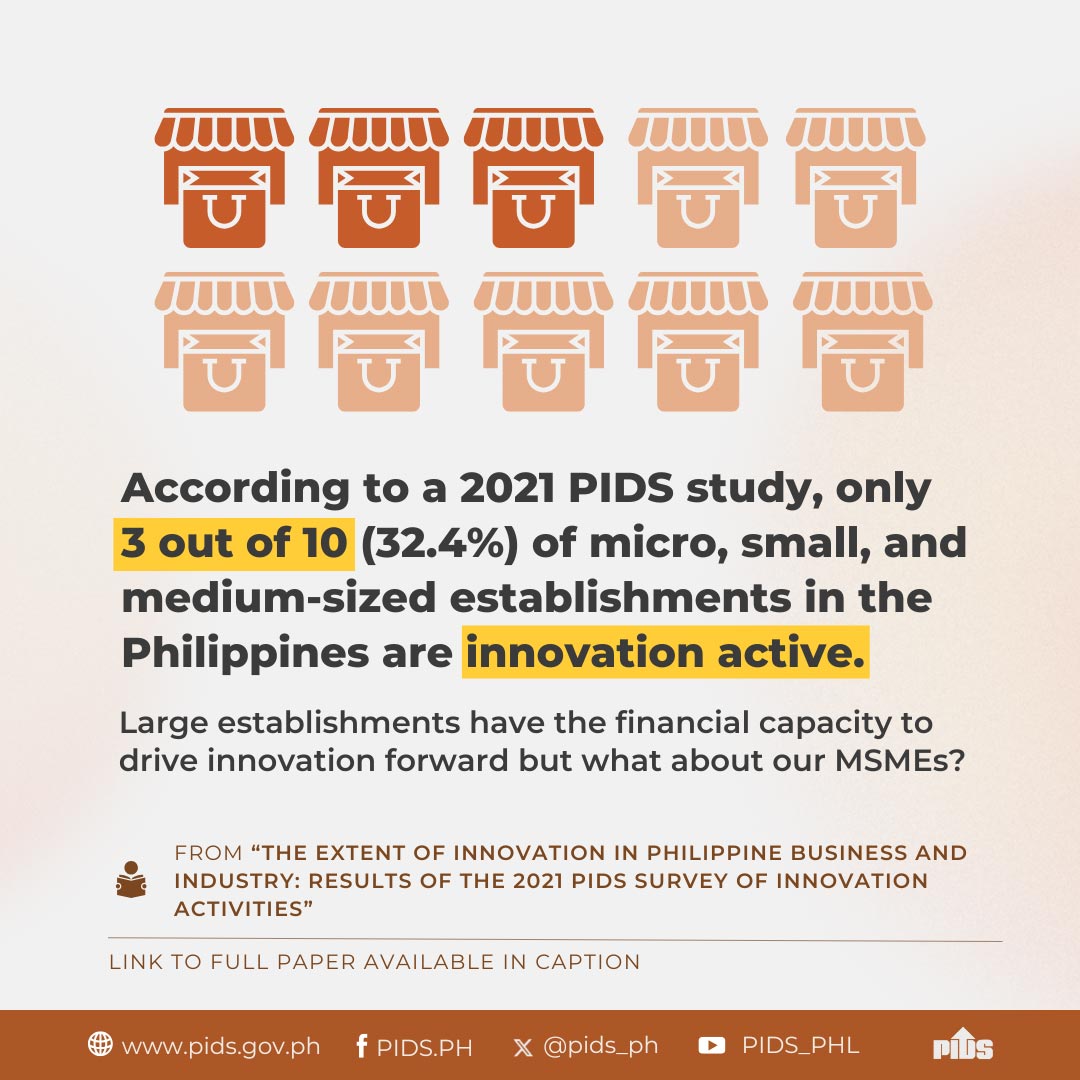QUEZON CITY, Feb. 16 - Long-term national development relies on innovation. Progress in science and technology (S&T) infused with innovation is necessary to achieve sustained economic growth. Innovation improves firm competitiveness and enables access to global markets. Simultaneously, innovation helps expand job opportunities and introduce new industries to the economy.
Although the Philippines has recorded a high-growth path in the past years, many analysts contend that the country could achieve more if it can improve its innovation capacity, which, inarguably, remains wanting. In the 2016 Global Innovation Index (GII) Report, co-published by Cornell University, INSEAD, and the World Intellectual Property Organization, the Philippines ranked 74th among 128 countries. Compared with its Southeast Asian neighbors, it is trailing behind Singapore (6th), Malaysia (35th), Thailand (52nd), and Viet Nam (59th). Indonesia and Cambodia ranked 88th and 95th, respectively.
Amid its growing potentials, the Philippine innovation sector continues to lag behind due to poor investment in research and development (R&D). Philippine investment in R&D hovers at a level of 0.12 to 0.14 of the gross domestic product (GDP), which is one of the lowest in Asia. In contrast, other developing countries (e.g., Japan, United States, Republic of Korea, and Germany) invest more than 2 percent of their GDP in R&D activities. A pressing concern is also increasing the country’s S&T human resource pool to offset the continuing migration of S&T graduates abroad, owing to more lucrative economic and professional opportunities.
State think tank Philippine Institute for Development Studies (PIDS) has conducted numerous studies on the close link between innovation and productivity. According to Gilberto Llanto and Fatima Lourdes del Prado, PIDS president, and former research specialist, respectively, aside from physical and human capital, firms need to invest in innovation. They also argue that in designing development agendas, policymakers, donors, and the stakeholder community usually consider the promotion of innovations as a tool to develop the capacity of small and medium enterprises to generate higher value addition and greater job opportunities. Their research also shows that firm size, age, and foreign equity are important factors leading firms to innovate.
Moreover, a case study on the automotive manufacturing industry by Francis Quimba and Maureen Ane Rosellon, PIDS research associates, reveals that the difficulty lies in translating the awareness of the importance of knowledge and technology into actual firm innovation. Meanwhile, a volume of work by Epictetus Patalinghug, Jose Ramon Albert, Rafaelita Aldaba, and Fatima del Prado shows a range of factors that determine or impede decisions to innovate. These factors include incentives, firm capabilities and resources, market factors, and the investment environment. Patalinghug, a PIDS consultant, notes that policymakers must create incentives like a stronger intellectual property rights law, standardized quality system, and the availability of technology transfer programs. Meanwhile, Albert, Aldaba, and del Prado emphasize the need to ease barriers to trade. According to them, the government has to be vigilant about stamping out anticompetitive practices. At the same time, it needs to address issues of inadequate physical and institutional infrastructure.
Currently, R&D investments are shouldered by a large margin by the Filipino taxpayers. Troublingly, despite government efforts to encourage firm innovation through initiatives like the Small Enterprises Technology Upgrading Program, Albert and his co-researchers note that the influence of government R&D and technology resource centers is still very weak.
The case for building an innovation-centered mindset does not rest alone on the cooperation between the private and public sectors. Strong linkages and coordination among research institutions, universities, and industry associations should be established, and collaborations to share knowledge and translate that knowledge into useful technologies should be encouraged. These should be complemented by well-crafted and implemented technology promotion and utilization programs that facilitate easy access to technology for the majority of the population.












